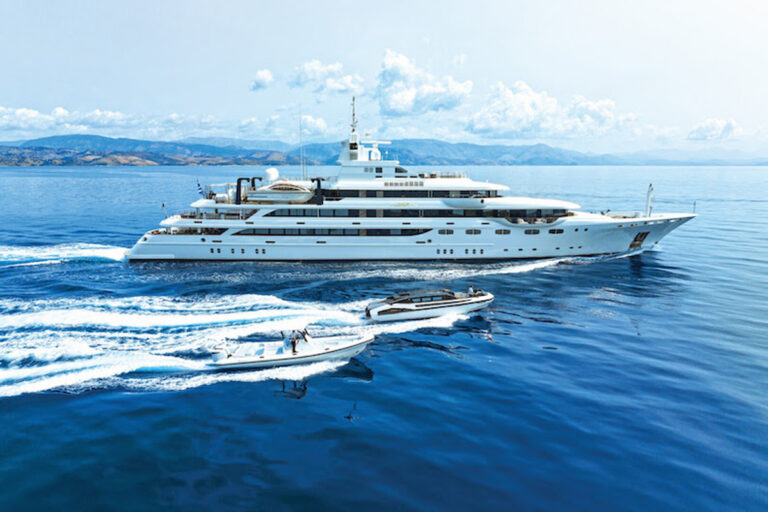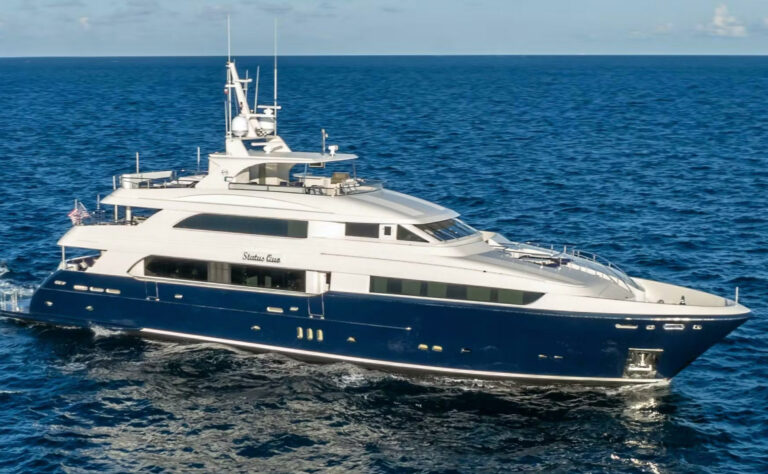In an era of bow and stern thrusters on boats as small as trailerable runabouts, many skippers rely entirely on thrusters to get in and out of tough docking situations. But what if the thruster fails?
Spring lines can take the crisis out of docking and undocking. Watch a delivery crew bring a single-screw trawler into a tight space. There’s no shouting, no heroic leaps to the dock, and the boat is snubbed down before anyone can lend a hand. They have the same equipment as your boat, but they know how to use spring lines effectively.
Before we consider the use of spring lines, here are a few general rules. A surprising number of yachts don’t have sufficient cleats, so be sure you have enough. A minimum of four to a side is necessary, giving you the standard bow and stern cleats. If your boat is in the 55-foot range or larger, you’ll want at least one additional cleat abaft the bow cleat.
Each spring line should be the length of your yacht, and you’ll need at least two in your locker. When using spring lines while maneuvering, remember to take up the slack gently. If you need more power to help turn your boat, don’t apply throttle until a strain has been taken on the line. Too much power can pop even husky docklines, which then become lethal whips.
Keep these basics in mind when you find yourself docking with only a small space between boats. A spring line from a cleat abaft the bow will tuck you in without nicking anyone’s paint. Approach at a 45-degree angle with the spring line ready. When the bow is near the pier, pass the spring line ashore and gently take up the slack with the engines in forward. If the pier is not well-padded, fenders should protect your hull. Put the helm hard away from the dock and the stern will ease neatly alongside.
This method is also ideal when the wind is blowing off the dock and the stern would otherwise drift outward after the bow line is passed ashore.
When backing into a slip without much room to maneuver, stop your boat at the end of the dock where you plan to moor, and “double an amidships spring line so it starts and ends at your boat and is looped around a cleat or piling. You’ll need someone to ease out the spring line as you maneuver, using the cleat for friction. Gently take up the slack with the engine in reverse and turn the wheel hard toward the dock your line is attached to. While easing the spring line, the stern of your boat will swing docilely through an arc until you are lined up in the slip. Leave the engine idling in reverse until you have the bow and stern lines secured. Some boats may need to use the dock corner as a pivot, so plan ahead with fenders.
You can also use spring lines when it’s time to leave, the wind is pinning you against the pier and there are boats ahead and astern. If you want to exit bow first, double an after spring line. Retrieve the bow and stern lines and, while idling in reverse, turn the steering hard toward the dock and add power gently. The bow will be levered away from the dock until you can straighten the steering, shift into forward, retrieve the spring line (don’t let it get tangled in the prop) and depart under control.
If you need to exit stern first, a doubled spring line from a bow cleat will hold you in place as you turn the wheel toward the dock, power forward with the outboard engine, and lever the stern outward. Either way, be sure you have fenders out to “lean against the pier.









